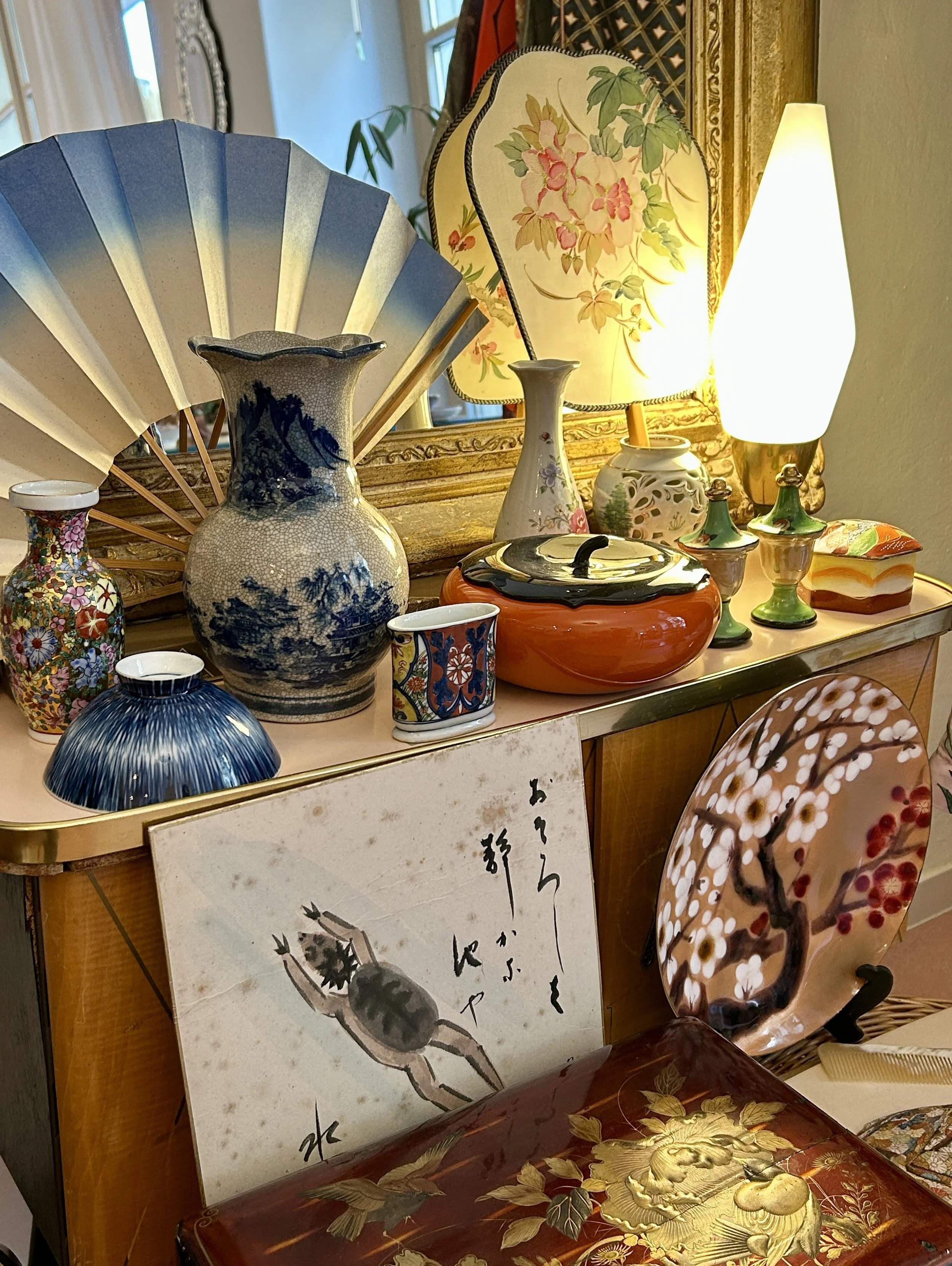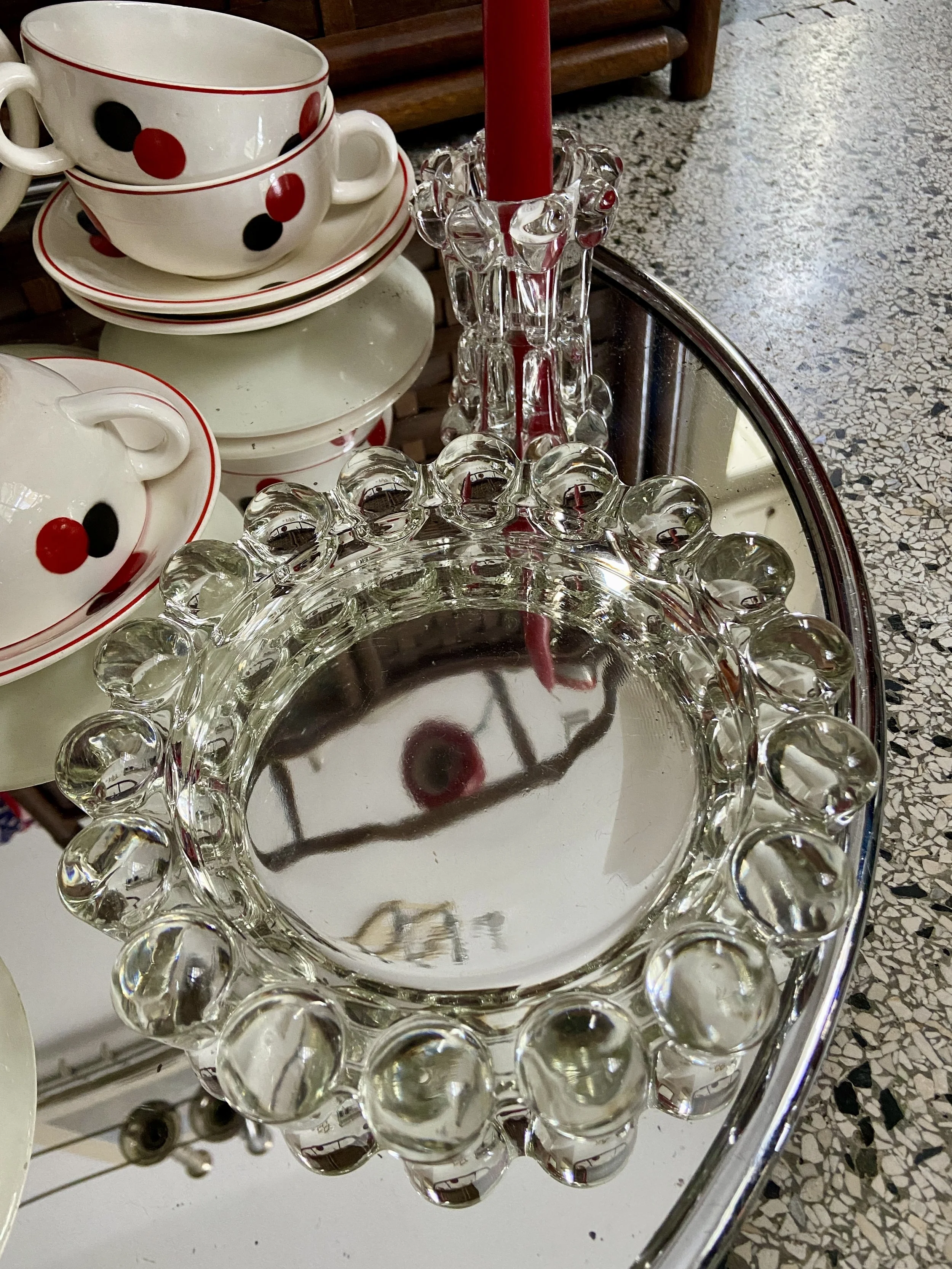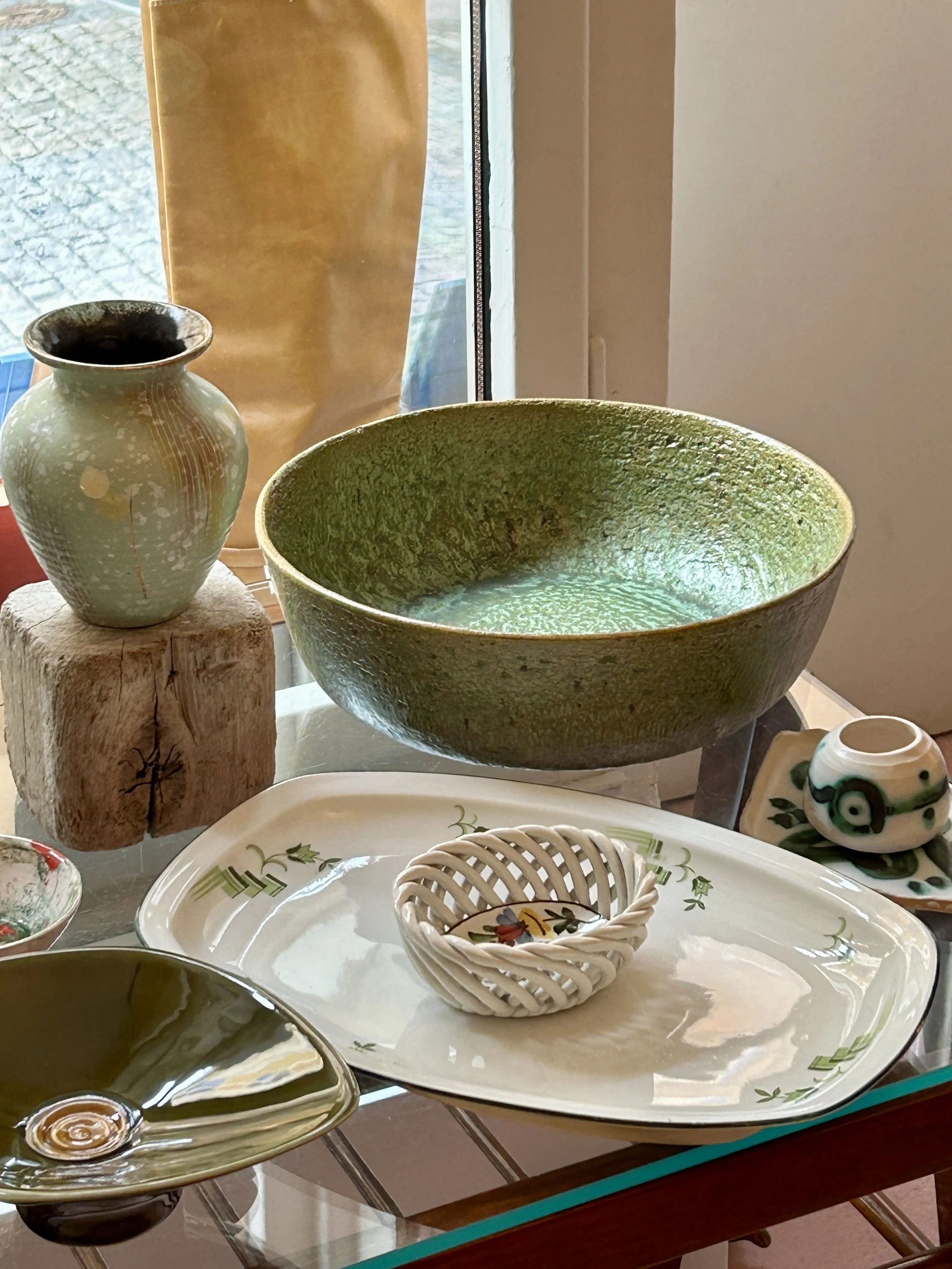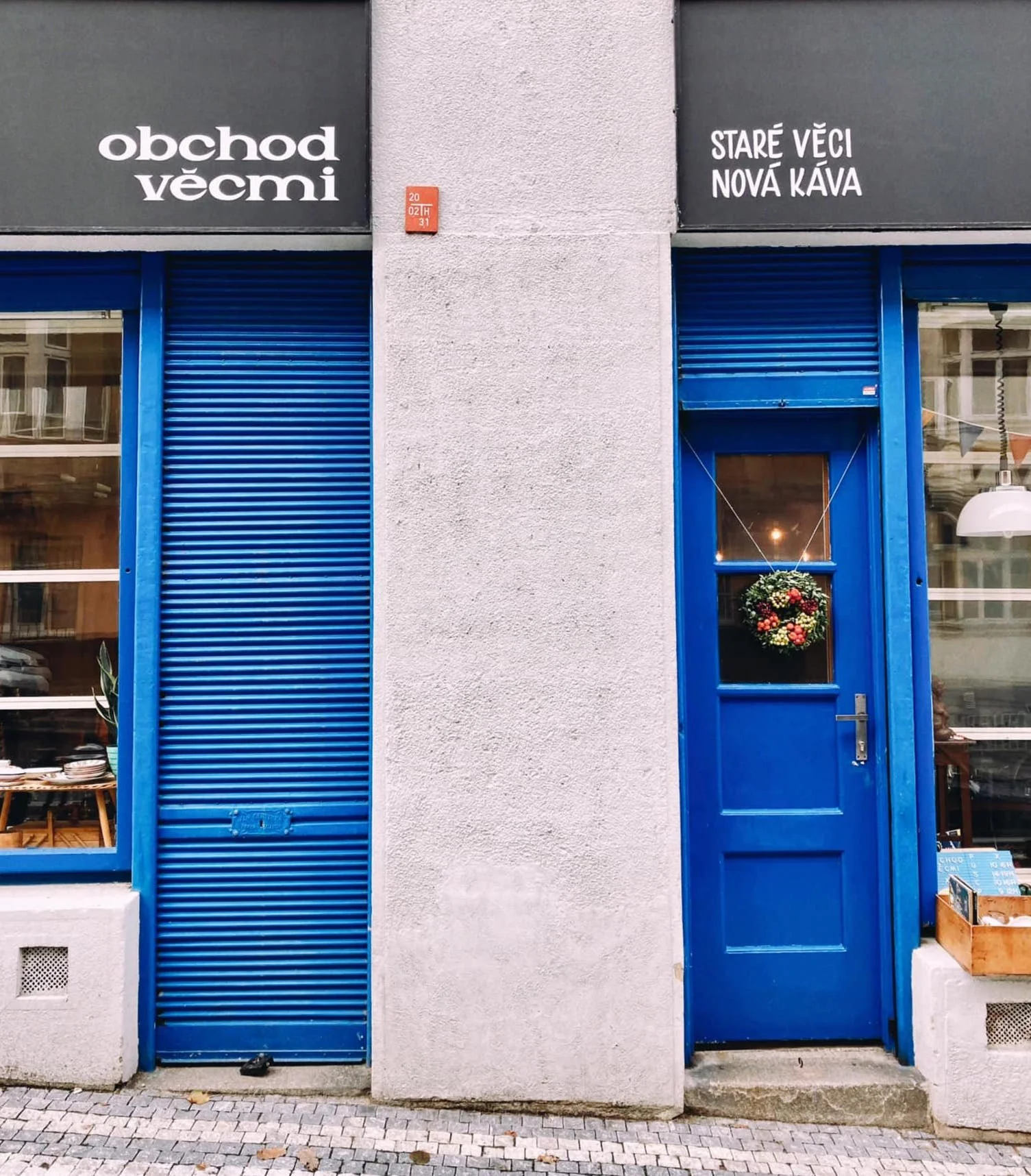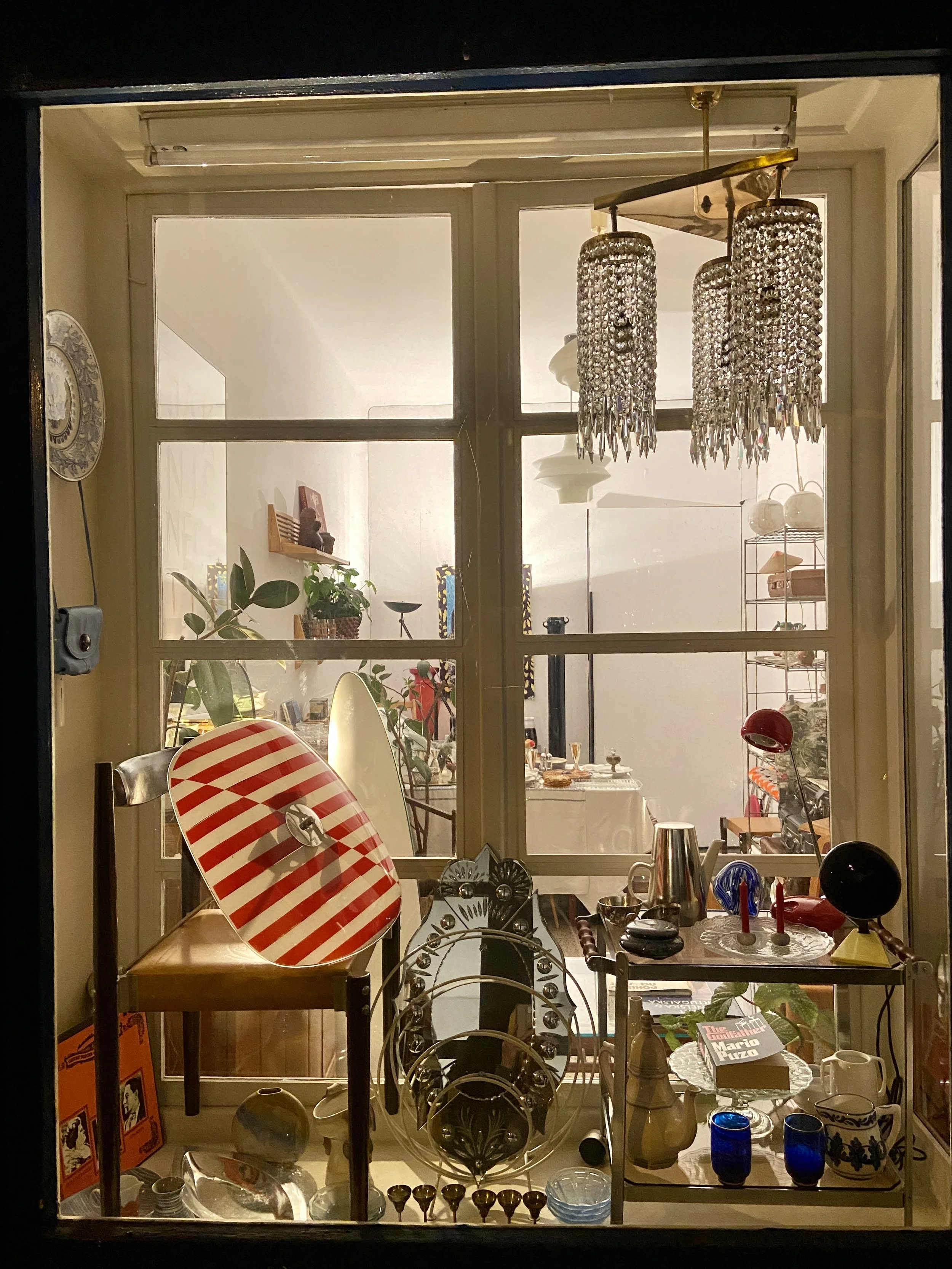Antique Alchemy: Vintage Stories, Eccentric Finds and a Maximalist Heart
For Iva Köhler the charm of old objects lies somewhere between history, humor, and heartfelt storytelling. Known as Sběratelka věcí—The Collector of Things—she doesn’t just sell vintage; she creates a world where the past and present blend into playful harmony. In her ever-changing showroom in Prague’s Nusle district, you’ll find Art Nouveau porcelain, mid-century glass, quirky ceramics, antique oddities and even the occasional porcelain pig. Some pieces come with elaborate tales, others with gentle mystery. But all of them share one thing: the power to make you stop, smile and marvel. You can follow Iva’s personal collecting adventures on @sberatelka.veci and discover new arrivals at her shop @obchod_s_vecmi where every object comes with a story, not just a price tag.
“Marveling is essential,” Iva laughs. “If a piece doesn’t make me marvel, I won’t bring it home.”
Her passion for forgotten beauty is rooted deep in her family history raised by generations of collectors, she grew up in a home that felt more like a living museum. Today, she curates not just objects but emotions: pieces that invite curiosity, nostalgia and a little mischief. From rescuing a Ligne Roset armchair in a dusty garage to amassing a surreal collection of vintage New Year’s postcards featuring pigs, Iva’s philosophy is simple: more is more, stories matter and homes should never look like sterile catalogues.
How did your journey begin were you a passionate collector, or was it a well-thought-out concept from the start?
I think my collecting journey began at birth it's probably written in my genes. My father is a collector, my grandfather was a collector... I’ve always been surrounded by old things (glass, clocks, paintings, antlers, Art Nouveau furniture, and even my grandfather’s vintage car in the garage). As a child, I went through a short, shy phase when I was embarrassed that our home looked like a museum, while my classmates lived in modern apartments.
I moved into my own place quite early, convinced that I couldn’t live in an empty or uniform apartment furnished with things everyone else has. As part of my personal “revolt,” I decided to free my collections of applied arts from the cabinets and actually use them. As for starting to sell and share my collection, that only happened in the past few years when my children were born—space shrank, but my desire to keep collecting and turn it into a business grew.
How would you describe your style in three words?
Ever-changing, maximalist, colorful.
Do you believe old things carry energy? What’s the most soulful item you’ve ever had?
Probably thanks to both of my collecting role models, who were always tinkering and fixing things, I’ve always been interested in how things are made and how they work. Whenever I hold an old object, I look at the craftsmanship hidden inside. I see the effort, the honest materials, the skill and yes, that’s what gives an object its soul for me.
Where do you think are the best places to find vintage treasures—flea markets, auctions, or secret private storage?
I should clarify that my collecting interests go way beyond the typical “vintage” period, which for me personally starts around the 1950s. My real loves are much older—19th-century pieces, Art Nouveau, all the way through to 1930s Art Deco. You don’t often find these at flea markets, and if you do, they’re rarely in good shape (though there’s an exception: the Nuselské Blešky, a vintage-focused flea market I organize in Prague).
I love visiting antique shops yes, even my “competition” or buying from other collectors. The truly original, rare pieces meant for another era and another taste—those I bring back from travels abroad.
Have you ever discovered a piece with an incredible story behind it?
One that comes to mind is an armchair that sat for years in the drivers’ storage room of the French Institute in Prague. It was covered in stains from shoes, smelled of gasoline and sweat... but I loved its chubby, organic shape and couldn’t miss the worn out Ligne Roset tag. And there it was: “Femina Body” by Annie Hiéronimus! I saved it from being thrown out, washed the cover several times and now my kids jump on it in their playroom.
“I once rescued a Ligne Roset chair from a dusty garage—it now lives happily ever after in my home.”
Is there a piece in your home you’re especially proud of? How did you find it?
I don’t have just one. I’m a democratic collector I love all my pieces equally. Sometimes I help them out by rearranging them, storing some away, pulling others back out, or “throwing things out” (meaning: sorting them and offering them for sale in my shop). I give each piece the same chance to shine and surprise.
What’s the trick to mixing vintage with modern interiors so that it feels natural?
Honestly, I think it CAN’T feel unnatural. What feels unnatural to me are catalog-perfect interiors, uniform designs, or spaces filled with things that aren’t even meant to be used (like the whole “Scandi boho” trend—that’s just twisted!). If I had to give advice, I’d say focus on one strong vintage or antique statement piece (like an armchair, chair, or lamp), and in the smaller details—dishes, decor—have at least three old pieces together. That always works.
What are the top three questions we should ask ourselves before bringing a vintage piece home?
For me: Does it make me marvel? Will it still make me marvel a year from now? Marveling is an absolutely key factor for me! And third: Does its price match the value it holds for me? I’ll explain: Vintage items, especially those from the 1960s onwards, are experiencing a huge boom right now. Instagram and its “vintage cool” aesthetic, inspired by Italy and the idealized lifestyle of the upper ten thousand everyone wants that dolce vita. So, a no-name vase with a bow or a shell-shaped bowl can cost hundreds, sometimes thousands. These motifs are trending. But honestly—is it worth it? Sometimes I see Instagram accounts selling a cracked vintage vase for 800 CZK and I literally fall off my chair. I look at my Art Nouveau vase on the shop shelf—made from fine stoneware with hand-sculpted handles, priced the same—and I think: “Is this what you imagined the world would be like in 100 years?”
Do you have a secret vintage guilty pleasure—something others might find kitschy, but you love it?
None of my collecting pleasures bring me guilt. But yes, a few ride the edge of kitsch like my collection of old New Year’s postcards with pig motifs (I have hundreds!) or those odd Art Nouveau figurines of strange children with strange animals.
